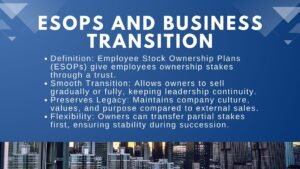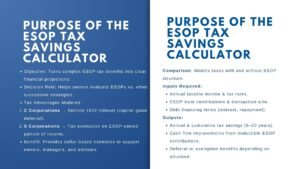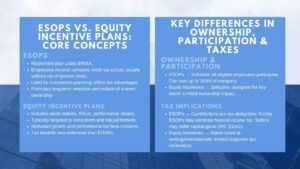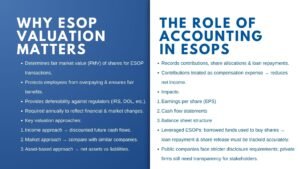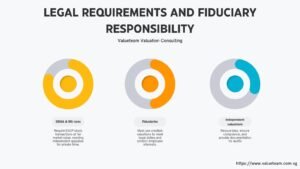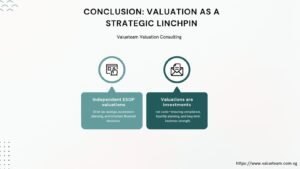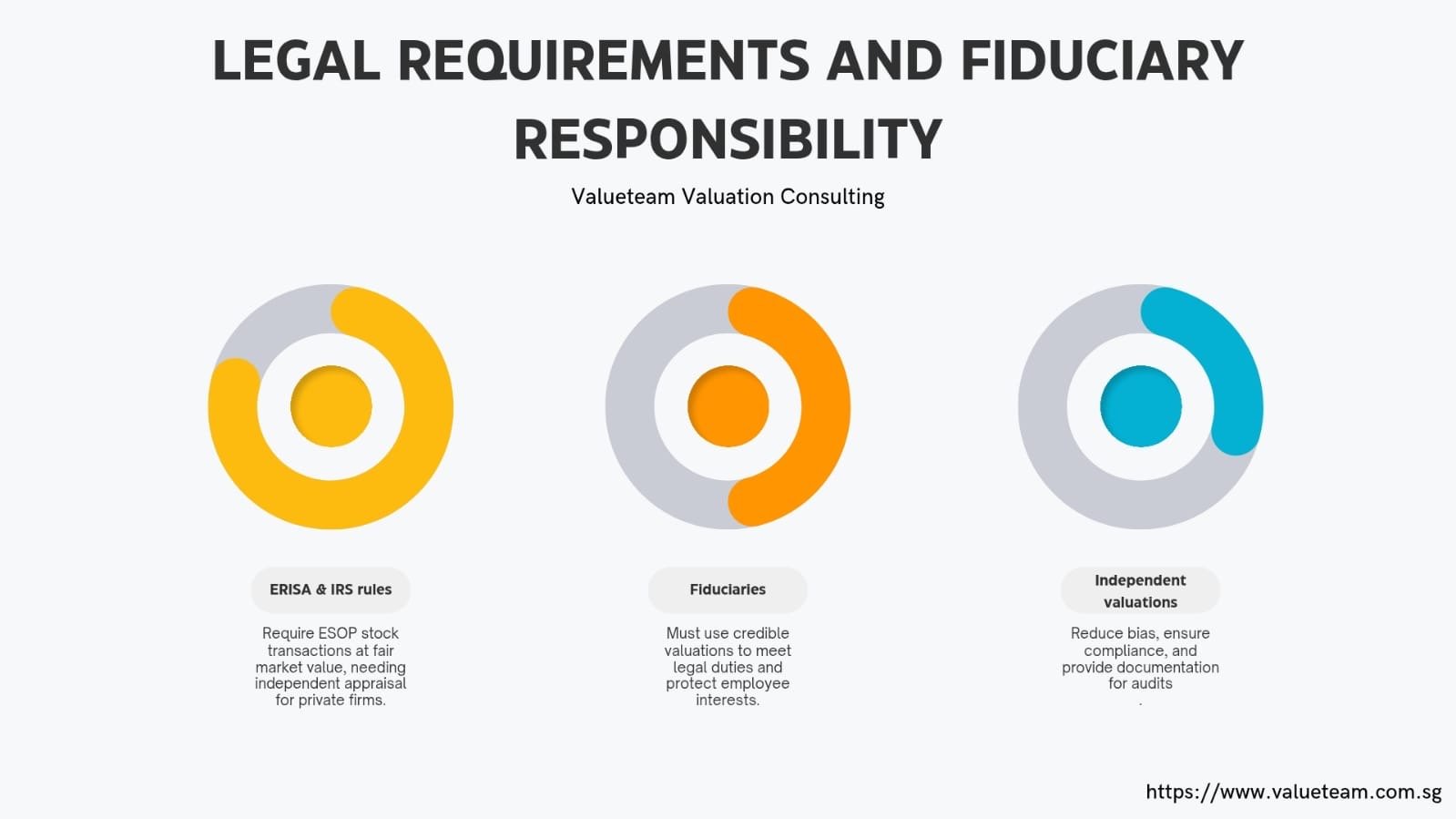
Perfect Understanding ESOP Valuation A Simple Guide
Perfect Understanding ESOP Valuation A Simple Guide
The Employee Stock Ownership Plans (ESOPs) is a strategic plan that has become very popular considering employee motivation, retention and alignment of the interests of the workforce to the long-time success of the firm. ESOP permits the employees to become owners of the organization where they may be giving it in compensation or benefits. Although the concept is simple, valuation of shares in an ESOP is a complicated exercise, which needs specificities, adherence to the rules and regulations, and a profound knowledge of business worth. An adequate ESOP valuation promotes fairness to the employees as well as the company, transparency to the stakeholders, and helps the organization remain compliant to taxation and legal requirements.
This is a guide that introduces the basics of ESOP valuation, reasons as to why it matters and how it goes on. It also looks into some of the considerations and problems which are common to companies that make valuations of their employee ownership plans.
What Is ESOP Valuation and Why It Matters
An ESOP valuation Singapore is used to calculate the fair market value (FMV) of a stock of a company with an aim of assigning it to the employees. The issue of valuation is therefore major when handling the ESOPs since most of the business is privately held and does not have a publicly traded value of the stock price.
An independent qualified appraiser whose expertise is based on accepted valuation standards is normally involved in carrying out the valuation. The appraiser has to look at the financial performance of the company, its standing in the industry, its growth opportunities and the market in general. On its part, the proper valuation of ESOP helps the company to prevent misallocation of shares either through over allocating or under allocating shares, reduces the possibility of conflicts that may arise and follows the legal requirements provided by existing laws that govern such as the Employee Retirement Income Security Act (ERISA) in United States.
A fair valuation will help the employees because they will receive a just impression about the worth of their ownership interest. To management, it confirms credibility and gives a culture of trust and transparency. It is also used as a reference point of future transactions in ESOP, redemptions and repurchases.

Key Factors Considered in ESOP Valuation
To value a company as ESOP, one would have to analyze several dimensions of business. The first is the financial condition of the company and this will entail revenue trends, profitability, cash flow, and balance sheet strength. Past performance should be valued; however, future projections are also considered in determining the future earning capacity of the company.
Industry prospects and market conditions are also contributory. Competitive landscape, barriers to entry, regulatory environment, and overall economic trends that could have an impact on the company will be evaluated by an appraiser. There is a good chance that companies in rapidly growing industries could end up being rated highly because of the growth opportunities whereas there could be a push towards lower valuation in declining industries.
Valuation outcomes are also results of operational efficiency, quality of leadership, and governance of the company. A company with competent management, well structured systems and sustainable competitive advantage will generally be valued higher as compared to a company operating on a weak basis or one that relies too much on a small number of customers.
Also, it depends on the nature of the shares that are compared. Valuation of ESOPs usually takes into consideration whether the stock is a controlling interest or a minority one. The sale of the shares with control may imply the premiums, and the shares without any control, or other marketability, may imply the discounts, which might be crucial in the case when those shares cannot be quickly sold on the market.
Common Valuation Approaches Used in ESOPs
Although the details differ between companies, ESOP valuations tend to follow similar fundamental methods to business valuation in general: the income approach, the market approach, the asset-based approach.
The income method, especially the discounted cash flow (DCF) approach, values the company on the estimated future value of the present value of the future cash flows of the company. Such a method has become popular when it concerns firms whose earnings and growth paths are predictable. It also needs to be developed attentively by the finances of best project finance model in ESOPs as well as a discount rate based on the risk of the company.
In the market approach, the company will be compared to other similar establishments that have been sold or which are publicly traded. Multiples of transactions price to earnings or EV/EBITDA are analyzed and adjusted by appraisers to reflect the disparities between the subject company and the comparables. This approach will give an idea of how the market rates companies operating in identical industries.
The asset-based approach gives attention to the net asset value of the company that is arrived at by deducting the liabilities as well as the fair market value of the assets. The technique is commonly applied to companies with a heavy asset base or in distress in which the worth of real property can exceed the earning power.
Pragmatically, appraisers can combine these two methodologies and can give emphasis on each of them with regards to the situation of the company. This is to make sure that the end valuation will accommodate not only the present financial realities but also the larger expectations at the market level.
The Process of Conducting an ESOP Valuation
A valuation of an ESOP has a fixed procedure to become precise and compliant. This is initiated by hiring a third party appraiser with the right qualifications and experience in appraising companies to put in an ESOP program. The company is asked to provide the appraiser with operation information, strategies and detailed financial data.
Once the data has been collected, the appraiser will undertake a comprehensive investigation of past performance, past trends of the industry and how competitive the company is. Then they choose useful valuation techniques and implement them so as to come up with an initial valuation. This initial value is subjected to the whole available information and is modified in case of need due to certain risks, characteristics of the ownership, and marketability.
The final valuation is documented in a report that outlines the methodologies used, the rationale for assumptions, and the supporting evidence. This report becomes an official record that can be reviewed by trustees, auditors, regulators, and other stakeholders.
Importantly, ESOP valuations are not a one-time exercise. Regulations often require that valuations be updated annually or whenever a significant event occurs, such as a major acquisition, divestiture, or change in the company’s financial position. Regular updates ensure that share allocations and transactions remain aligned with the company’s true value over time.
Challenges and Considerations in ESOP Valuation a simple guide
Despite using facts on the basis of set principles, the valuations done on ESOPs pose their own special rings which need to be taken care of carefully. The issue of maintaining a balance between the interest of the employees, who would want valuations that are high, and the requirement of realistic and sustainable share valuations is one of the problems. Overstating valuations may cause the company to be placed under financial pressure in case it repurchases the shares whereas undervaluing the shares may demotivate the employees.
The other difficulty is in dealing with subjectivity of valuation. Despite intense review, some of the assumptions including the growth rates, discount rates, market multiples, are founded on professional opinion. Various appraisers can come up with varied appraisal opinions and this is the significance of consulting a qualified and unattached valuation specialist.
Conformity is also important. The valuation of ESOPs should be legally and regulatory compliant and any act short of it may result in legal battles, penalty or tax entanglements. Businesses have to make sure that the procedure of valuation is established, defendable, and well-documented.
Lastly, economic and market fluctuations have the potential of affecting the ESOP valuation. A company can change rapidly, as far as interest rates, inflation, or some industry shifts are concerned, and in turn, the company valuation is affected. Such dynamics is crucial to the fact that companies need to consider the ESOP valuation as an ongoing strategic exercise and not as a once off necessity.
Conclusion
An employee ownership scheme depends on ESOP valuation. Valuation provides a reasonable and justifiable price of company shares, thus entitling employees who become the owners to equitable compensation in terms of stock ownership and the company to its adherence to the law and financial responsibilities. The process requires excellent knowledge of financial analysis, market conditions, and valuation techniques and the capacity to balance various interests of the stakeholders.
Trust between workers and the management, transparency and long term success of the ownership plan can be enhanced by carrying out ESOP valuation by professionals. No matter whether the company is adopting ESOP or doing its annual valuation update, doing it is necessary to adopt the rigor and integrity.

